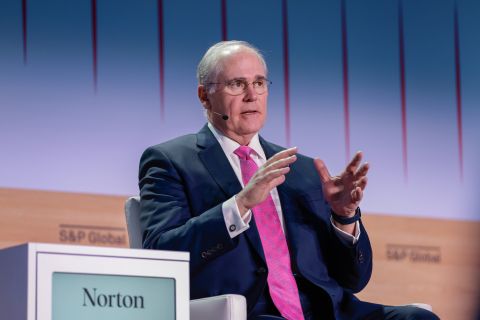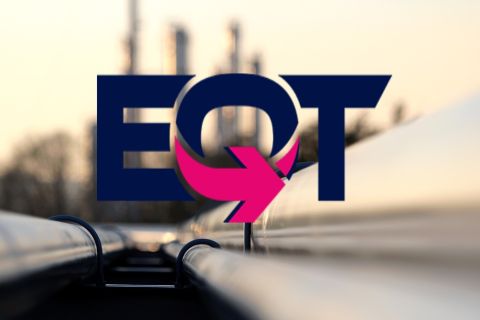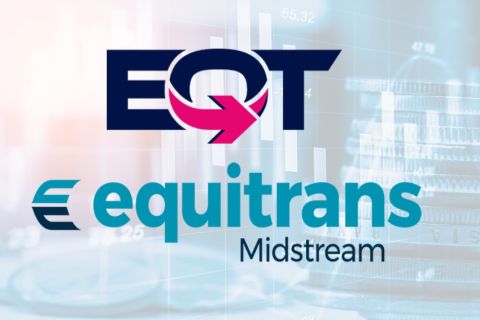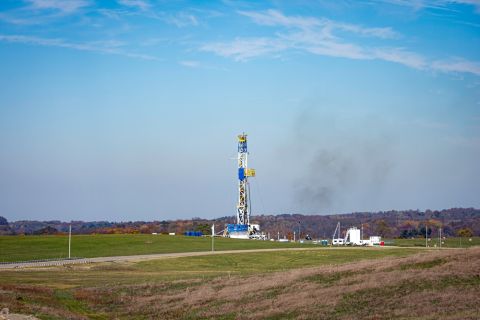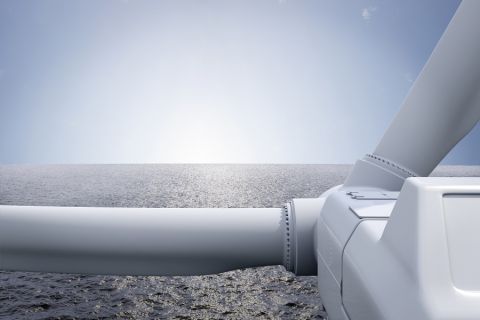Douglas-Westwood’s (DW) new World Development Drilling & Production Forecast states that in 2013 the number of drilled offshore oil and gas development wells totaled just more than 3,000. However, in 2020 well numbers will need to exceed 3,900 to meet global oil and gas demand, which is set to grow 17%.
Global oil consumption rose 8% from 2004 to 2012, while gas consumption rose 24% during the same period, according to BP’s 2013 Statistical Review. Many countries are seeking cleaner energy generation, so they are moving away from coal and oil to gas. This is especially the case in Asia, where expanding economies necessitate a larger gas supply. Also, natural gas is set to become more available, with LNG technology continuously evolving and the necessary infrastructure being developed.
Traditionally, productive offshore provinces are in decline and face a variety of futures. Shallow-water oil production is struggling for growth despite high levels of investment; well completions will rise 10% by 2020 for less than 1% output growth.
Africa
Africa will be a continent of mixed futures in oil and gas production. West Africa’s deepwater fields will continue to go from strength to strength, while North Africa’s political instability will likely hinder offshore exploration and developments. East Africa has recently undergone a great deal of exploration, with Eni now developing gas fields in Mozambique. Growth in onshore and offshore gas in Mozambique and Tanzania could potentially be driven by export opportunities to South Africa and Southeast Asia.
North Africa’s continuing turmoil adds a blot on an otherwise bright future for the African upstream sector. Egypt is struggling to pay international oil companies (IOCs) and independents for gas, leading to a decline in both production and the pool of potential investors. Algeria’s huge onshore potential will see little or no focus offshore, while Libya’s volatility will prevent further development of the handful of projects already active.
West Africa will sustain strong growth offshore as IOC-led projects continue to flourish. Nigeria plans to introduce new petroleum laws in the near term to create a less risky operating environment. Angola’s deepwater production is set to ramp up as its shallow-water sector matures. Presalt discoveries in recent years are now showing promising early production. These factors will see African deepwater well completions rise more than 600% from 2013 to 2018.
The Americas
Across the Atlantic Ocean, offshore Brazil will continue to dominate Latin American production, with a host of FPS projects planned for its already prolific Campos and Santos basins, boosting deepwater well completions by nearly 250% by 2020. Considering this, DW predicts offshore production will rocket to just under 4 MMbbl/d by 2020, a massive 75% increase from 2013 levels.
Elsewhere in Latin America, Mexico’s 2013 energy law reforms will undoubtedly lead to a host of opportunities for IOCs, with discoveries in the deepwater Perdido Fold Belt as well as a shallow-water production agreement with the U.S. A significant production increase will likely not be seen until at least 2018 or 2019, however, because licensing rounds will not be held until the end of 2015.
In the U.S. Gulf of Mexico, well completions have recovered since 2010, increasing from 112 to 177 in 2013. This was caused by the lifting of the moratorium put in place following the Macondo incident and sustained high oil prices. DW predicts that with rallying gas prices, well completions will steadily increase to a peak of 265 in 2018.
Asia
The biggest export opportunities for Pacific-adjacent Latin American markets are expected to lie in the prospering Southeast Asia economies. China is the most significant of these as it continues to seek to boost domestic production as well as create new import opportunities with investment abroad to fuel one of the world’s largest economies. Domestically, declining conventional onshore output will be rescued by heavy investment into unconventionals, most notably coalbed methane (CBM) production, as shale oil and gas struggle for growth in the medium term. Offshore, CNOOC has ambitious plans for deepwater gas projects alongside a shallow-water sector that has seen strong growth in recent years. DW expects production targets will be achieved by a 23% increase in offshore well completions by 2020.
Japan and South Korea, important regional importers, represent attractive opportunities due to high local gas prices. The rest of Asia-Pacific is expected to capitalize on this, with gains in gas production driving LNG exports.
Leading the way will be FLNG plans from Shell in Australia and Petronas in Malaysia, both making strides in helping Australia fill its LNG capacity. The government’s CBM targets also are expected to help fulfill the country’s LNG plans. DW expects CBM production to account for about 50% of Australia’s total gas output by 2020.
Shallow-water gas drilling will increase in Southeast Asia as markets look to take advantage of export opportunities. Thailand and Vietnam will account for much of this drilling due to high decline rates and low well productivity. Thailand alone drilled 410 offshore wells in 2013 to maintain gas production at just under 1 MMboe/d. To put this into some context, Qatar drilled just 28 wells in 2013, producing more than 2.6 MMboe/d of gas.
Russia
Over the border in Russia, despite declining output from the mature onshore Western Siberia and Urals-Volga regions (which the U.S. Energy Information Administration stated in 2012 accounted for 85% of production), output will be maintained by greenfield projects both onshore and offshore. Therefore, DW expects Russia’s production to plateau in the 2020s, with an average annual growth of 1.4%. DW expects the three-phase Sakhalin project to contribute to an offshore gas production figure of 1.3 MMboe/d. With all this considered, DW predicts offshore well completions in Russia will more than double by 2020.
Europe
Western Europe will continue to rely on imported Russian gas into the 2020s as mature offshore fields (which typify the region) struggle for growth and large-scale shale gas extraction looks increasingly unlikely in the medium term. With many IOCs planning investment into U.K. offshore fields through EOR, deepwater plays and downstream infrastructure upgrades, DW predicts that production will rally slightly to around 1.75 MMbbl/d by 2017, requiring maintenance of the recent 6% jump in well completions. The necessary high levels of expenditure are unlikely to be sustained in the long term due to the U.K.’s offshore maturity; therefore, DW expects a resumption of decline toward the end of the decade. On the other side of the North Sea, Statoil is attempting improved recovery from brownfield projects. Along with the start of projects in the large Johan Sverdrup and Goliat fields, brownfield projects will see the number of well completions sustained at about 200 per year beyond 2020. DW expects these projects will see Norway sustain gas production into the next decade.
Middle East
Some of the biggest growth in drilling markets will be seen in the Middle East as national oil companies (NOCs) invest billions of dollars redeveloping maturing fields, with a 42% growth by the end of the decade. Qatar aims to boost production from the offshore North Field, the world’s largest nonassociated gas field. However, the short-term success of this is dependent on the lifting of a moratorium put in place to shift investment into downstream sectors. The UAE will try to ramp up production in both oil and gas, spending $60 billion and $25 billion, respectively. The success of this redevelopment now rests solely with UAE’s ADNOC—the NOC recently took control of all IOC assets in the country. Saudi Arabia, currently the world’s largest oil producer, will see offshore oil well completions rise 44% by 2020 as the country looks to maintain output at more than 10 MMbbl/d. With several projects due to come onstream in the Arabian Gulf, offshore well completions will rise to 541 in 2020 from 370 in 2013.
Taking stock, DW forecasts global growth—good news for drilling contractors and oilfield services as the increasing abundance of mature regions requires more wells to be drilled to achieve smaller gains in production. Indeed, the DW production forecast requires a 30% offshore well completion increase from 2013 to 2020 for only a 22% rise in global offshore oil and gas output.
Recommended Reading
ONEOK CEO: ‘Huge Competitive Advantage’ to Upping Permian NGL Capacity
2024-03-27 - ONEOK is getting deeper into refined products and adding new crude pipelines through an $18.8 billion acquisition of Magellan Midstream. But the Tulsa company aims to capitalize on NGL output growth with expansion projects in the Permian and Rockies.
EQT Ups Stake in Appalachia Gas Gathering Assets for $205MM
2024-02-14 - EQT Corp. inked upstream and midstream M&A in the fourth quarter—and the Appalachia gas giant is looking to ink more deals this year.
EQT Deal to ‘Vertically Integrate’ Equitrans Faces Steep Challenges
2024-03-11 - EQT Corp. plans to acquire Equitrans Midstream with $5.5 billion equity, but will assume debt of $7.6 billion or more in the process, while likely facing intense regulatory scrutiny.
Ohio Oil, Appalachia Gas Plays Ripe for Consolidation
2024-04-09 - With buyers “starved” for top-tier natural gas assets, Appalachia could become a dealmaking hotspot in the coming years. Operators, analysts and investors are also closely watching what comes out of the ground in the Ohio Utica oil fairway.
US Proposes Second GoM Wind Lease Auction
2024-03-20 - Combined, the four proposed areas for offshore wind have the potential to power about 1.2 million homes if developed, according to the Interior Department.

